
|
Astronomy Picture Of the Day (APOD)
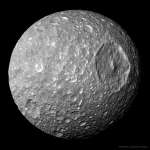 Mimas: Small Moon with a Big Crater
Mimas: Small Moon with a Big Crater
30.05.2021
Whatever hit Mimas nearly destroyed it. What remains is one of the largest impact craters on one of Saturn's smallest round moons. Analysis indicates that a slightly larger impact would have destroyed Mimas entirely.
 Aurora over Clouds
Aurora over Clouds
29.05.2021
Auroras usually occur high above the clouds. The auroral glow is created when fast-moving particles ejected from the Sun impact the Earth's magnetosphere, from which charged particles spiral along the Earth's magnetic field to strike atoms and molecules high in the Earth's atmosphere.
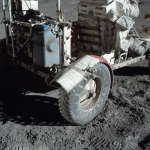 Lunar Dust and Duct Tape
Lunar Dust and Duct Tape
28.05.2021
Why is the Moon so dusty? On Earth, rocks are weathered by wind and water, creating soil and sand. On the Moon, the history of constant micrometeorite bombardment has blasted away at the rocky surface creating a layer of powdery lunar soil or regolith.
 Total Lunar Eclipse from Sydney
Total Lunar Eclipse from Sydney
27.05.2021
The reddened shadow of planet Earth plays across the lunar disk in this telescopic image taken on May 26 near Sydney, New South Wales, Australia. On that crisp, clear autumn night a Perigee Full Moon slid through the northern edge of the shadow's dark central umbra.
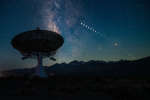 Mid Eclipse and Milky Way
Mid Eclipse and Milky Way
26.05.2021
May's perigee Full Moon slid through Earth's shadow yesterday entertaining night skygazers in regions around the Pacific. Seen from western North America, it sinks toward the rugged Sierra Nevada mountain range in this time-lapse series of the total lunar eclipse.
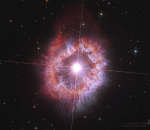 The Outburst Clouds of Star AG Car
The Outburst Clouds of Star AG Car
25.05.2021
What created these unusual clouds? At the center of this 2021 Hubble image sits AG Carinae, a supergiant star located about 20,000 light-years away in the southern constellation Carina. The star's emitted...
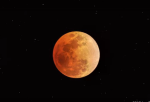 The Moon During a Total Lunar Eclipse
The Moon During a Total Lunar Eclipse
24.05.2021
How does the Moon's appearance change during a total lunar eclipse? The featured time-lapse video was digitally processed to keep the Moon bright and centered during the 5-hour eclipse of 2018 January 31. At first the full moon is visible because only a full moon can undergo a lunar eclipse.
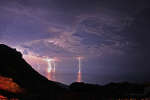 Lightning Eclipse from the Planet of the Goats
Lightning Eclipse from the Planet of the Goats
23.05.2021
Thunderstorms almost spoiled this view of the spectacular 2011 June 15 total lunar eclipse. Instead, storm clouds parted for 10 minutes during the total eclipse phase and lightning bolts contributed to the dramatic sky.
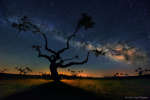 The Galaxy Tree
The Galaxy Tree
22.05.2021
First came the trees. In the town of Salamanca, Spain, the photographer noticed how distinctive a grove of oak trees looked after being pruned. Next came the galaxy. The photographer stayed up until 2 am, waiting until the Milky Way Galaxy rose above the level of a majestic looking oak.
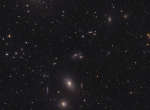 Markarian s Chain
Markarian s Chain
21.05.2021
Near the heart of the Virgo Galaxy Cluster the string of galaxies known as Markarian's Chain stretches across this deep telescopic field of view. Anchored in the frame at bottom center by prominent lenticular galaxies, M84 (bottom) and M86, you can follow the chain up and to the right.
|
January February March April May June July August September October |
|||||||||||||||||||||||||||||||||||||||||||||||||